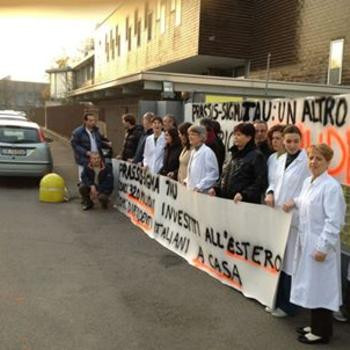Flexible plastic container with 0.86 g of 19.2 L helium gas. If you remove 0.205 grams of helium gas in continuous pressure and temperature, what is the new size?
2 Answers
I got
Explanation:
This is a case of Avogadro's law, that is
We first need to convert
So,
Now, if we remove
the new amount becomes
Plugging in the values, we get
14.62 liters
Explanation:
The requested answer was the new size reached by the flexible container (presumably a balloon)
Removing 0.205 grams of helium brings the mass to 0.655 grams.
By a simple proportion:
0.86 g : 0.655 g = 19.2 L : x L
x= 14.62
The new size of the container is 14.62 L
No need to calculate moles number.
The above calculation holds true for every gas


